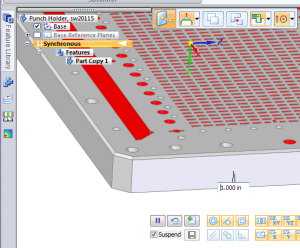Maybe my work PC is a touch weak, but I need to make a perferated sheet 4ft*10ft* with a 1" border, using .375" SQ. holes on .625" spacing. Square pattern.
Ive tried a number of things but it just brings my PC to its knees. I have tried:
Feature; Fill pattern. (Awesome control)
sketch; Linear Pattern. (hole lotta nope)
Assembly; Pattern cubes for the holes and combine cubes with plate and subtract. (Works best, less control)
Is there any other ways to do this? any sneaky tricks or work-arounds? (dont know why we call em work-arounds if we spend most of our time doing it that way)
Thanks Guys, Justin

